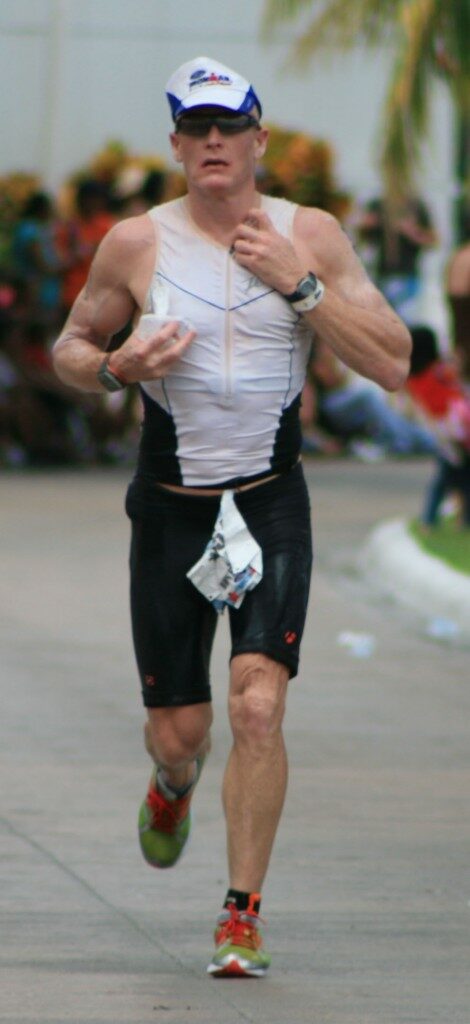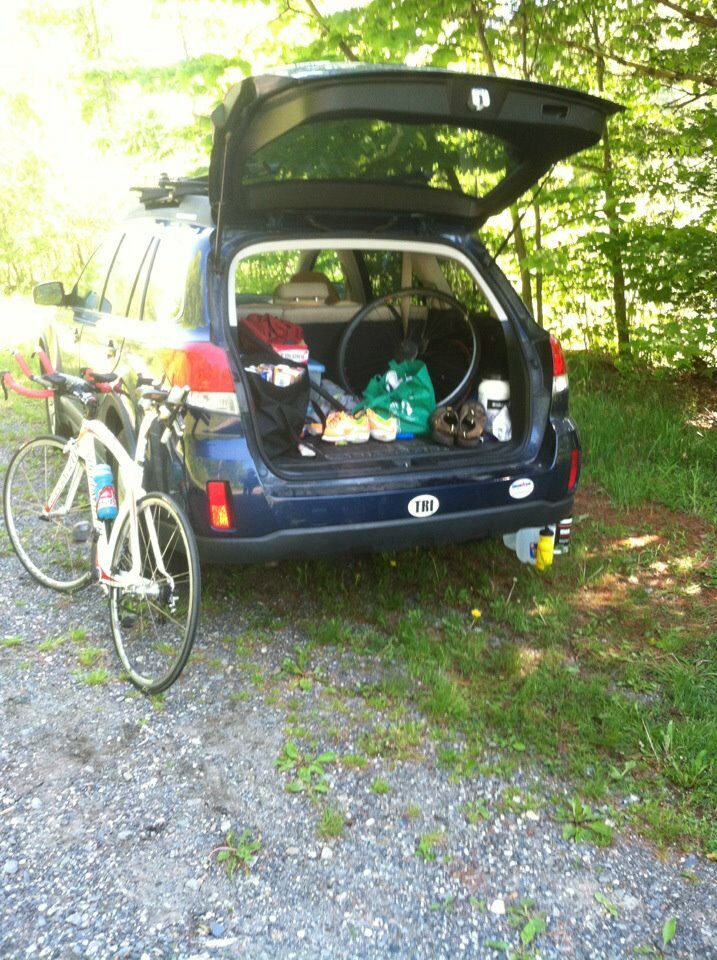Our bodies, regardless of how fit we are, have a limited ability to tolerate increases in core temperature. The research suggests that as our core body temperature reaches or exceeds about 103 degrees Fahrenheit (39.5 celsius), our bodies will fatigue, our pace will slow, our rate of perceived exertion will increase, and we risk heat exhaustion or stroke if the core temperature continues to rise.
When we are at rest, our core temperature may be between 97-99 degrees (F). Exercise inevitably increases core temperature, because it produces heat in the body, some of which is stored, and some of which exits the body via respiration and sweat, making proper hydration a key element in any cooling plan.
Each individual has a slightly different rate of heat production and heat storage, which is based partly upon body composition. For example, the larger an athlete is, or the more body fat he or she has, the quicker and higher the rate of heat production and storage, as compared to lighter or leaner counterparts.
So, the game becomes a process of reducing our rate of heat production and storage to avoid reaching a limiting core temperature, or even worse, exceeding those limits and bringing on heat exhaustion or heat stroke, a dangerous and potentially life threatening condition.
These are some of our tips to beat the heat, which you can use while training and racing. We’ve broken these tips down into some key categories: 1) Hydration and Nutrition; 2) Gear; and 3) Acclimating & Effort.
Hydration & Nutrition
- Hydrate, hydrate, hydrate. You should perform a sweat loss test to determine how much you sweat, and then work to keep up with that rate during training and racing. Consuming sports drink or gels/supplements with electrolytes (such as sodium, magnesium and potassium) is a good idea – especially if you are training in the heat for 45 minutes or more. Experiment in training to find what works for you.
-

This is an “aid station” that John and I created out of the back of our car on a 25-mile bike loop we did in Vermont. We rode that loop for 6 hours, using our car to refresh with cold drinks and ice. While it can be boring to repeat a loop that many times, staying cool beats overheating. When training, create and repeat a loop course for your rides and runs – especially long ones. On this course, either your house or your car can serve as an “aid station,” stocked with ice, cold water/drinks, wet/cool towels or sponges, and so on. When using your car as an aid station, store an easy-to-reach cooler outside of the car so you don’t have to go in and out of the car each time. (See back of passenger side in picture to the right.) Alternatively, you can plan your route with stops at various convenience stores (if you don’t ride a lot of rural roads, like we do).
Make your loop an appropriate length, so you can pass by your homemade aid station at regular intervals. Mimic the offerings that you might find at a race
- Aid station protocol (for training & racing): Drink fluids, pour water over your head, put ice in your hat, your bra, your shorts, place sponges or a cold towel in your shirt and shorts. Repeat.
Gear
- Wear a visor or hat to keep the sun off your face, and try to ride and run in the shade as much as possible. You can also put ice in a hat (see picture below – John doesn’t have a cone-head – there’s a lot of ice in there!).
- And, speaking of gear, wear a race kit with quality material. Don’t skimp due to price. The better the material, the happier you will be come race day.
- Apply and re-apply sunscreen. Not only will this keep you from getting a nasty sunburn (which will make you feel hotter), sunscreen can cool your skin down when it starts to heat up. We always keep sunscreen in transition when we race. During training, we keep it at our homemade aid station, or bring small packets with us.
Acclimating & Effort

- Train in the early morning as much as possible. It’s more humid, but the temperature is usually lower. If it’s dark, wear reflective clothing for the cars.
- An exception to the previous tip: Do some of your training during the time you will be racing to help you acclimate to heat that will be similar to race conditions. Always acclimate slowly and gradually. If you aren’t used to running in 90-degree humidity, that is not a good time to go do a 2 hour run.
- Be patient with your pace and speed. The heat makes us slower. Concentrate on your effort – not your pace.
- Heat increases your heart rate. We allow for 5-7 beat increase in our heart rate ranges during hot training and racing days. However, you want to be careful not to exceed this, as it will make it difficult to maintain your effort – especially for long sessions and races. The cooler you can keep your core, the less cardiac drift you will experience. You need to be in touch with your RPE – beyond just what the metrics of heart rate or power are telling you.
- Know the signs that indicate you might be heading into danger – and stop immediately when you experience them. These include (but are not limited to): dizziness, lightheadedness, cessation of sweating, clammy skin, and mental confusion.
Training and racing in the heat offers a set of challenges to which you can acclimate your body. You must be adaptable to the conditions, and pay attention to the signs your body is giving you. Use your training as an opportunity learn these signs, to adapt to the conditions, and always be sure to recover fully out of high-heat sessions.
If you have questions about heat acclimation, please contact us. We’re happy to help!

